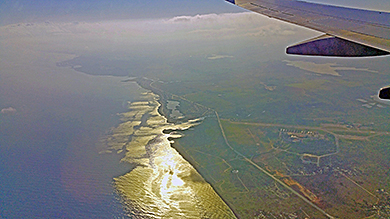
First sight of Cuba’s northern shoreline from the air on flight to Havana
Since US travel restrictions were eased on Cuba, Americans have been flocking to this Caribbean island just an hour’s flight from Miami. Current restrictions for US citizens traveling to Cuba require travellers to visit under one of twelve categories. (Find these categories at http://1.usa.gov/1sCOBaX .)
Commercial flights between the US and Cuba are slated to start by fall of this year (2016). The two countries signed a civil-aviation agreement in February opening the door for U.S. airlines to begin offering scheduled airline service for the first time since the early 1960s. We traveled by charter airlines in the spring of 2015.
Americans still cannot travel as tourists, but the easiest category under which to qualify is “People to People,” a program designed to focus on giving the visitor an up close and personal exposure to Cuban people and their culture. A group of 22 of us traveled to Havana for a six-day trip in the spring of 2015. What follows is just a sampling of those memorable “People to People” connections along with only a few of the other many fascinating places and people we visited.
Day 1
Our group of 22 started our Cuban adventure with an afternoon check-in and evening orientation dinner at the Miami Airport Marriott Hotel. Our smarTour guide, Greg Geronemus - co-owner of the company - met and stayed with us for the entire trip. (http://smarTours.com) A Cuban government representative joined us for a two-hour session where we filled out official paperwork - precisely - after which we all tried to get a good night’s sleep.
Day 2
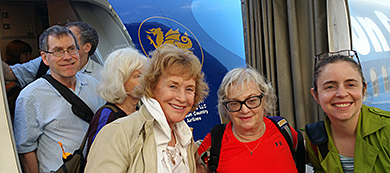
US citizens can most easily travel to Cuba under the “People to People” category
Up at five for a 6am check-in and an hour-long 8:30am charter flight aboard a large, comfortable jet to Havana. Customs processing was quick and easy. We retrieved our luggage and boarded a coach that took us directly to Revolution Square – Havana’s largest, most important plaza – where plans for their big May Day celebration were in full swing and visitors oogled the Yank Tanks surrounding the plaza.
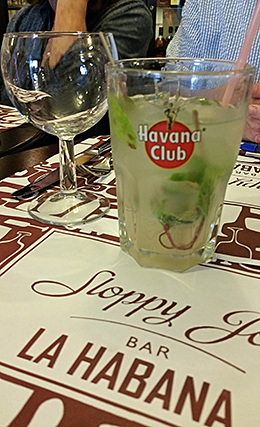
The mojita is obligatory at every Cuban lunch and dinner.
Sloppy Joe’s is no exception.
After checking into our five-star, Spanish-built and -owned, high-rise Melia Cohib Hotel on the harbor boardwalk or Malecon, we had lunch at the iconic Havana Sloppy Joe’s Restaurant – Sloppy Joe’s all ‘round of course.
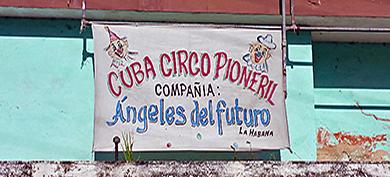 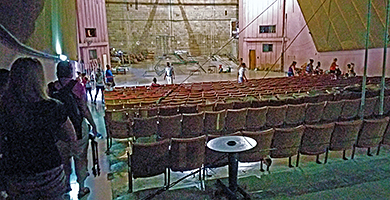
Angels of the Future, located in an abandoned movie theatre-turned circus school.
Our first “People to People” experience found us next at Angeles del Futoro, Angels of the Future - an abandoned cinema theater-turned-community-space for circus arts and other studies. The students in this community program – teens and younger – are all kids from troubled circumstances: divorce, single parents, difficulties in school, etc.
| |
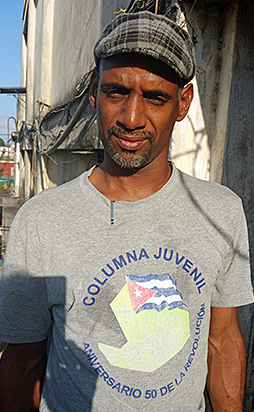 |
|
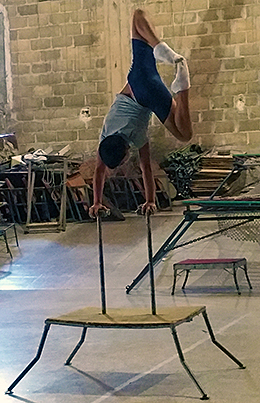 |
|
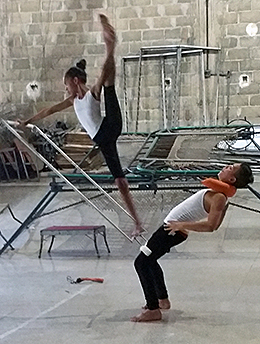
|
|
| |
Founder, “Kiko” Oldelmis Hernandez Vazquez |
|
Circus gymnast |
|
Two circus gymnasts |
|
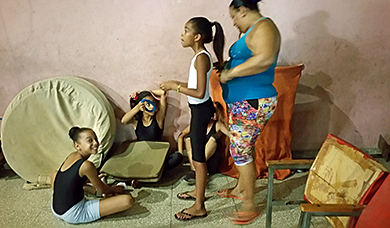
Circus gymnasts with Mom
Founded 20 years ago by Artistic Director, Oldelmis Hernandez Vazquez, 43 - everyone calls him Kiko - this project had been in this new Havana space for three months when we visited. 86 kids come here five days a week after school, 5 – 8pm, to rehearse and study theater, ballet, acting, music and all the circus arts. As graduates of this non-professional school, 23 former students already had professional jobs. Kiko considers his students the future of the huge Cuban Circus, a world-renowned company with weekly performances in Havana.
Kiko initially trained “on the Cuban streets” as a clown and then at the National School of the Circus in Havana. The long-standing Cuban circus tradition originated with the Chinese. When slavery ended in 1886, Cuba imported 50,000 Chinese to do the slave labor from which the former African slaves had been freed. The Chinese brought with them their ancient, well-respected and traditional circus arts.
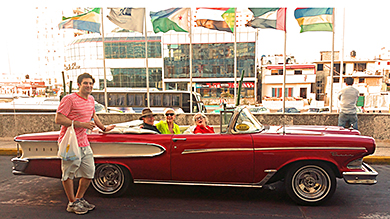 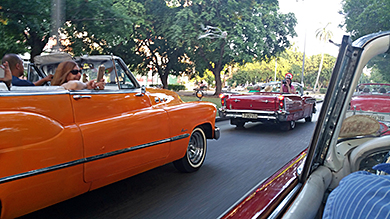
We were met with a pleasant surprise that evening – taxi rides to dinner in a fleet of those famous classic American cars from the 50s and 60s known in Cuba as Yank Tanks.
Day 3
| |
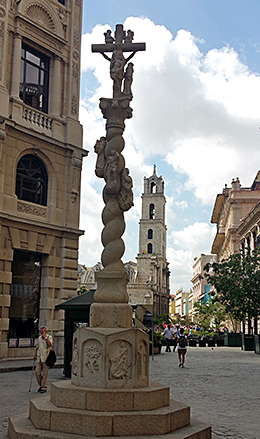 |
|
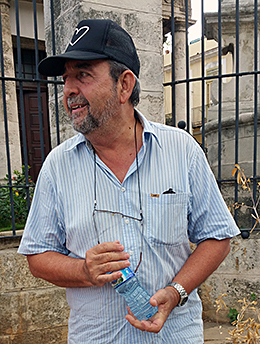
|
|
| |
Francisco Square in Old Havana |
|
City architect, Carlos de la Regatta |
|
| |
|
|
|
|
| |
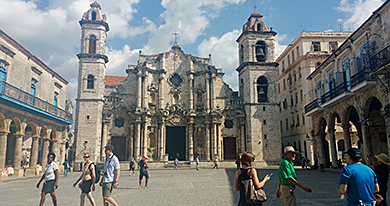 |
|
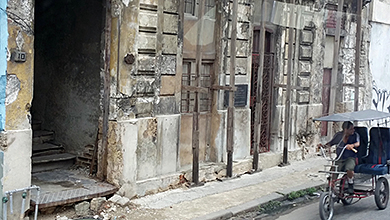 |
|
| |
Cathedral Plaza in Old Havana |
|
Old Havana in need of renovation |
|
The morning of day three found us on a walking tour of Old Havana with City Architect, Carlos de la Regatta. After centuries of neglect, in 1977 the Cuban government launched a restoration plan to rescue its historic buildings, some of which date as far back as the 16th century. Norman Mailer once said “the only thing Havana needs is a million gallons of paint.”
| |
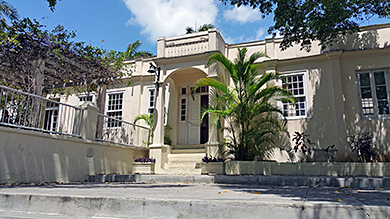 |
|
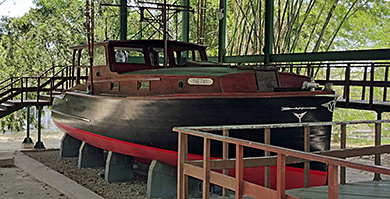 |
|
| |
Hemmingway's House |
|
Hemmingway's boat "Pilar" |
|
| |
|
|
|
|
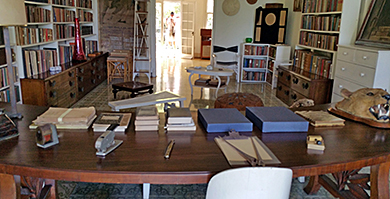
Hemmingway's desk
Next on our packed agenda – a visit to Ernest Hemmingway’s home, Finca Vigia, in the suburb of San Francisco de Paula, about 9 miles southeast of Havana. Many of his private artifacts, including his legendary fishing boat, the Pillar, remain on public view here at his home, now a museum. Fishermen in Cojimar were inspirations for Hemmingway’s “Old Man of the Sea.”
That evening, we were lucky to get the last few tickets to The Buena Vista Social Club performing at our hotel’s nightclub featuring some of its original performers. Originally a club in Havana in the 1940s, the Buena Vista Social Club inspired a recording made in the 1990s by Ry Cooder with Cuban musicians, and then a documentary nominated for an Oscar. These successes sparked a big revival of Cuban and Latin American music.
Day 4
| |
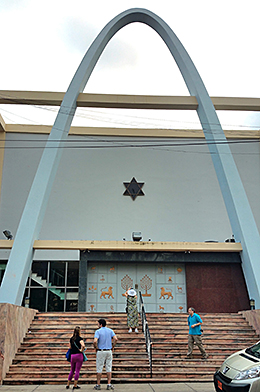 |
|
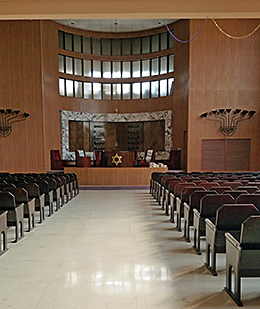
|
|
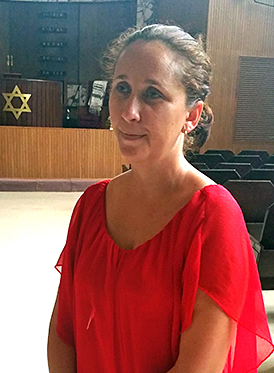 |
|
| |
|
|
|
|
Assistant Director of the Synagogue who “does everything,” Monica del Pino Meller |
|
Another surprise opportunity. A few of us got up very early to visit one of the three synagogues in Havana, Temple Beth Shalom, the orthodox temple in Old Havana. Yes, there are still Jews in Cuba - about 1,500 in Cuba, 800 in Havana. Those Cubans who left the island for Miami in 1959 the locals call Jubans. Beth Shalom has no government support but - from contributions, mostly from U.S. donors - provides free meals, a senior program, a pharmacy and transportation.
| |
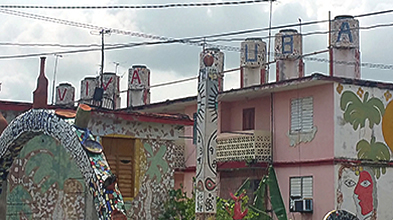 |
|
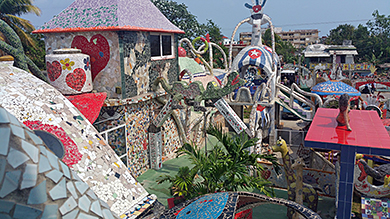 |
|
| |
Fuster neighborhood |
|
Fuster courtyard |
|
| |
|
|
|
|
| |
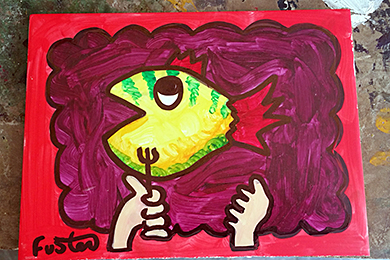 |
|
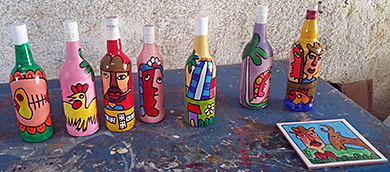
|
|
| |
Fuster fish tile |
|
Fuster bottles |
|
Our next “People to people” adventure was a trip to Casa Fuster, the home of Cuban artist Jose Rodriguez Fuster. Since starting this project in 1990, Fuster has rebuilt the fishing town of Jaimanitas in the outskirts of Havana where he lives. His village is now considered a work of public art, a revered part of Cuban culture that could be likened to Watts Towers in L.A., that of Gaudi in Barcelona or the public artwork of Brâncuși in the Romanian city of Targu Jiu. Fuster sponsors this project only by the sale of his paintings and ceramics. He has said that his spiritual father is Picasso and his favorite uncle is Gaudi.
| |
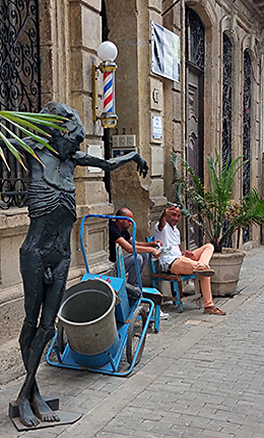 |
|
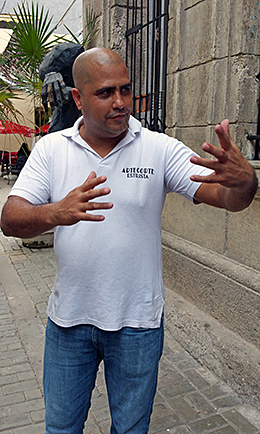 |
|
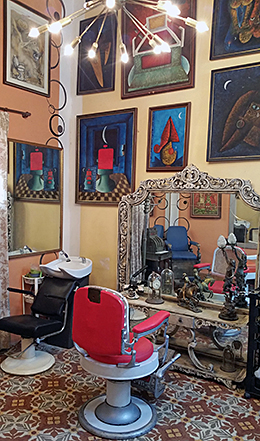 |
|
| |
Outside Pepito's beauty salon, eight floors up. |
|
Barbershop owner, Pepito, says he traded his hair for a dream. |
|
Interior of this neighborhood salon with fixtures from the 50s. |
|
| |
|
|
|
|
| |
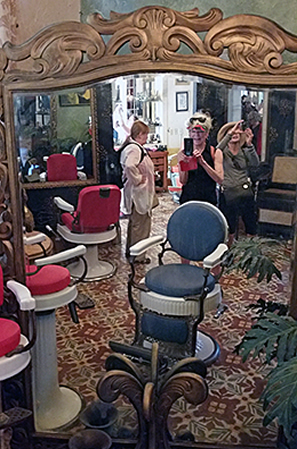 |
|
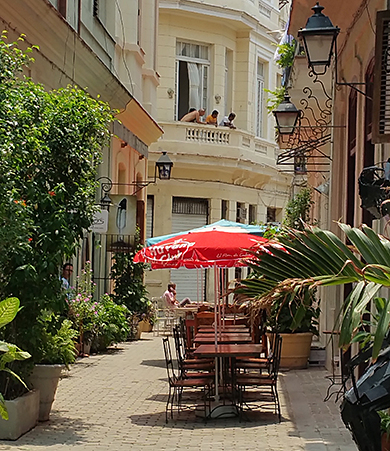 |
|
| |
Barbershop interior with visitors takingpictures. |
|
Barbershop restaurant
|
|
The Santo Angel neighborhood project, Artecorte, is a resurrection of the culturally favorite gathering place in every Cuban community – the barbershop (or beauty parlor). This is where Cubans have traditionally gathered to have a coffee, share the day’s gossip, discuss politics and even get a haircut. Once the Cuban government began in 1991 to allow private businesses in people’s homes, Pepito started this shop solo on his top floor, 52 well-worn marble steps up. Pepito now has five employees, a beauty school across the street and a collaboration with an adjacent private restaurant or paladar, Figaro, with lovely outdoor seating, Cuban entertainment and great food.
Day 5
| |
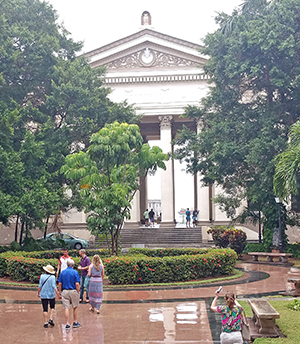 |
|
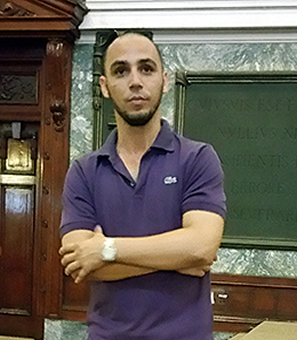 |
|
| |
University of Havana |
|
Student guide Nestor |
|
Founded in 1728 by Dominicans, the University of Havana is one of five universities in Havana and 54 in all of Cuba. This University is the most prestigious, and as all others, is free. One of its most well-known students, Fidel Castro enrolled in law school in 1945. Our guide, Nestor, was studying for a degree in PR, Journalism and Marketing which will take him five years and promises an opportunity to join the profitable Cuban tourism industry.
| |
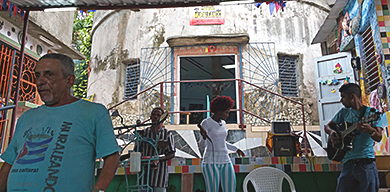
|
|
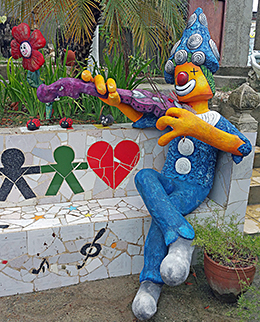 |
|
| |
Muraleandro artists and musicians |
|
Muraleandro clown sculpture |
|
Begun in 2010, this neighborhood project Muraleandro has been working to transform an abandoned water tank into a community arts center and with great success. Victor, our guide, shared with us a bit of the local music taught and presented here as well as the artist’s wares of their community.
Cuban baseball star Rodondo Macias |
Baseball is Cuba’s national sport. The game stirs national passion and Cubans celebrate their players as national heroes. One of them, Rodondo Macias, joined us for lunch and shared the story of his career: in 1958 the Cincinnati Reds wanted him to sign, but if he had, he never would have been able to return to Cuba and his family. The Giants and the Dodgers also wanted to sign Rodondo, but he instead continued to play in Cuba and was voted, from 1967 to 1972, the best pitcher in Cuba. Macais has continued his career as coach and technical advisor in Cuba and is today highly respected as one of Cuba’s great national baseball heroes.
| |
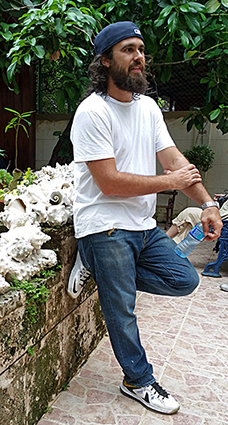 |
|
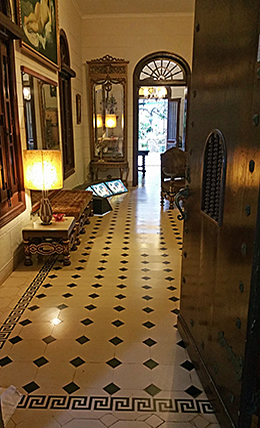 |
|
| |
Artist Lorenzo Lopez Shening |
|
The artist's home |
|
| |
|
|
|
|
Our last “People to People” experience took us to a neighborhood of elegant houses -some in disrepair and some in restoration – like the home of Lorenzo Lopez Shening, artiste extraordinaire.
| |
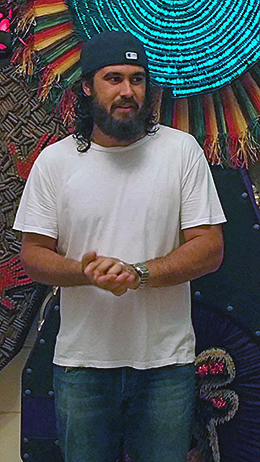 |
|
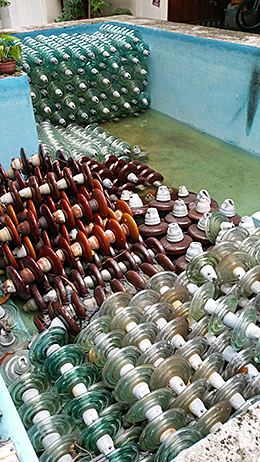 |
|
| |
Lorenzo Lopez Shening |
|
Lorenzo's recycled transformers |
|
| |
|
|
|
|
| |
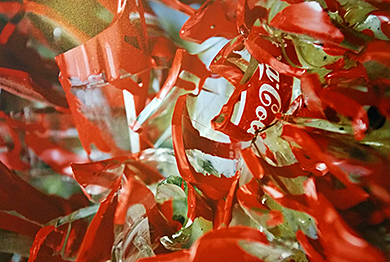
|
|
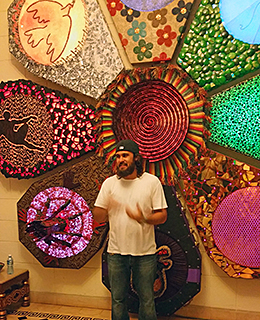 |
|
| |
Recycled broken Coke bottle art |
|
Lorenzo and his art |
|
Looking very much like the iconic photograph of then 31-year-old Che Guevera, 32-year-old Lorenzo constructs his works from available materials and not “art supplies” since in Cuba, those supplies are few and impossible to find. Each petal in this large piece, The Flower of Life, is made up of salvaged materials.
Everything he uses is recycled. His swimming pool is full of glass transformer parts from torn down communication poles that he’s planning to use in a future art piece.
Lorenzo’s thoughts on the easing diplomacy between the U.S. and Cuba: “It will get full of Americans. It’s been the forbidden apple for 60 years and everyone wants to come. We will live out of tourism but have to be smart. We don’t want to lose our culture, our sense of Cuban dignity.”
This is a sentiment and concern we heard again and again on our adventures throughout our stay in Cuba. And it’s one with which we heartily agree.
http://smarTours.com (Tour group website) http://1.ua.gov/1sCOBaX (US Government Cuban travel details)
|